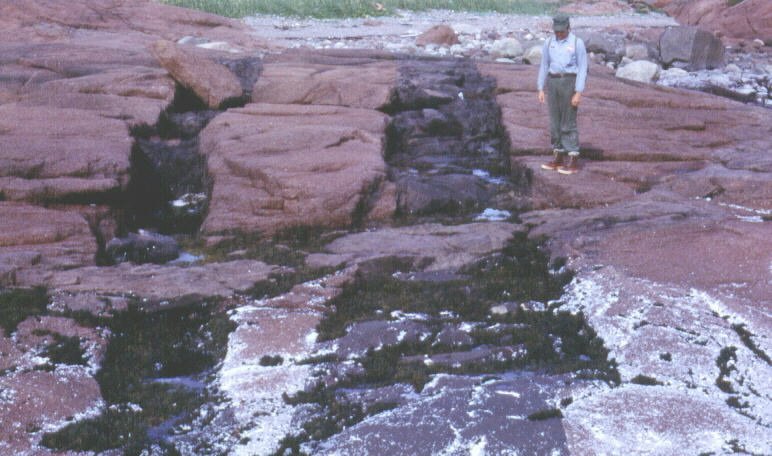
Cross-cutting Dikes

The view shows a parallel pair of dikes which have a black color because the melt which formed the dikes had a basaltic composition. These basaltic dikes have intruded the pink syenite bedrock. Terry Harlacher, my field assistant, is standing next to one of these dikes for scale. The white coating on the rock surfaces in the foreground is from modern marine life because I took the photograph only a few feet away from breaking waves of the coast. The boulders in the background are glacial erratics, rocks which were carried by the glacier and dumped when the ice melted. Between the foreground and Terry is a light-colored dike that is oriented from left to right across the picture and which cuts each of the two dark basaltic dikes and the pink syenite bedrock. The age sequence here, from oldest to youngest, is the syenite bedrock, the basaltic dikes, and the light-colored dike. The bedrock and dike surfaces are at the same level here because they have, until recently, been submerged beneath the waters of the Gulf of Saint Lawrence. Thus, they have not been exposed to atmospheric weathering for long periods of time. They still preserve the polished surfaces that were caused by the most recent glaciation.
I was able to identify seven distinctive dike compositions which had separately intruded the syenite and, using cross-cutting relationships in the field like the one illustrated above, I was able to determine the relative age sequence for five of these seven.